What is a rotator cuff tear?
A rotator cuff tear is a tear in your rotator cuff, a group of muscles and tendons that keep your arm connected to your shoulder. Your rotator cuff helps your arm move, and a rotator cuff tear can limit that movement and cause pain and weakness, making everyday activities a challenge.
Rotator cuff tears are a common cause of shoulder pain, but they are treatable. An orthopedic specialist can work with you to develop a personalized treatment plan that helps reduce discomfort and improve your shoulder mobility.
Anatomy of a rotator cuff
Your shoulder is a ball-and-socket joint where a ball (the head of the humerus, or your upper arm bone) fits into the socket (glenoid) of your shoulder blade (scapula). The ball at the top of your arm fits into a shallow socket in your shoulder blade.
The rotator cuff, made of four muscles, helps hold the arm in place and allows you to lift and move it. The tendons of the rotator cuff cover the top of the arm bone and help with arm movement.
There’s also a small fluid-filled sac called the bursa between the rotator cuff and the top of your shoulder. It helps the tendons move smoothly, but if the tendons are damaged, the bursa can get irritated and cause pain.
Rotator cuff tear symptoms
Symptoms of a rotator cuff tear include:
- Pain in the front or outer side of the shoulder
- Pain at night or when lying on the shoulder
- Difficulty raising the arm
- Weakness in the shoulder or trouble lifting objects
- Clicking or popping sounds when moving the arm
If the tear is sudden (acute), the pain is usually sharp. In general, rotator cuff pain can be sharp when reaching up or dull and aching, especially at night or after resting.
When to see a doctor
You should see your doctor if your shoulder and arm pain are persistent and don’t get better with at-home treatments or over-the-counter pain medications. Your doctor should also know if your shoulder pain starts to interfere with your day-to-day activities or a good night’s sleep. If you notice redness or swelling in your shoulder joint, or your shoulder or arm suddenly becomes weak, see your doctor right away.
Causes of rotator cuff tear
Rotator cuff tears can be caused by injuries (acute) or wear over time (degeneration).
- Acute tear: This type of tear happens suddenly, often due to an accident, such as falling on an outstretched arm or lifting something too heavy with a jerking motion. It can also occur alongside other injuries like a broken collarbone or dislocated shoulder.
- Degenerative (wear-related) tear: Most rotator cuff tears happen slowly over time due to wear and tear. This is a natural part of aging and often doesn’t cause much pain. Tears are more common in the dominant arm and if you have one tear, there’s a higher chance of it occurring in the other shoulder, even if it doesn’t hurt.
Factors that contribute to degenerative tears:
- Repetitive stress: Repeated shoulder movements during sports or on the job can put stress on the rotator cuff and lead to tears.
- Lack of blood supply: As we age, blood flow to the tendons decreases, which reduces the body’s ability to heal damage, leading to tears over time.
Rotator cuff tear risk factors
Anyone can experience a rotator cuff tear. These factors may increase your risk:
- Age: Most rotator cuff tears are caused by wear and tear that may happen with aging and occur in adults older than 40. Younger adults are more at risk of acute tears associated with injuries.
- Genetics: Some evidence suggests that people can be genetically predisposed to rotator cuff tears.
- Existing medical conditions: Shoulder impingement and rotator cuff tendonitis can increase your risk for a rotator cuff tear. If you have a chronic tear in one shoulder, you’re also more likely to develop a tear in your other shoulder.
- Occupation: People with jobs that require repetitive overhead motions, such as painters, carpenters and mechanics, have a higher risk for rotator cuff tears.
- Sports: Athletes have a greater risk for rotator cuff tears due to overuse, especially baseball pitchers and tennis players.
Complications
Without treatment, a rotator cuff tear can get worse and lead to persistent discomfort and bigger issues. Eventually, moving your shoulder and using your arm could become difficult or nearly impossible. Potential complications of an untreated rotator cuff tear include:
- Chronic pain in your shoulder and arm
- Permanent loss of motion
- Weakness of the shoulder joint that makes it difficult to lift your arm
How is a rotator cuff tear diagnosed?
Rotator cuff tears can be diagnosed with a physical exam and medical imaging. The physical exam can help determine whether and what types of imaging can help your doctor confirm a diagnosis or rule out other possible causes of shoulder pain, such as a pinched nerve or arthritis.
-
Medical history and exam
Your doctor will want to know about symptoms you’re experiencing, your level of pain and what type of activities bring it on. During your physical exam, your doctor will perform a series of tests that involve moving your shoulder in different directions. This helps them check your shoulder’s range of motion and your arm strength.
-
Imaging tests
Based on the results of your physical exam, your doctor will likely order imaging tests to see whether you have a complete or partial tear or another shoulder injury or condition.
Those tests may include:
- MRI scan: An MRI can provide detailed images of your rotator cuff, including the extent and location of a tear.
- X-ray: A rotator cuff tear won’t show up on X-ray because this test doesn’t show soft tissues. However, an X-ray can help your doctor identify other causes of your pain, including arthritis.
Rotator cuff tear treatment
Early treatment can help prevent the pain from getting worse and get you back to your regular activities faster.
There are several treatment options for a torn rotator cuff, all of which focus on reducing discomfort and helping you regain movement and function in your shoulder. Your doctor will develop a treatment plan based on the type of tear you have as well as your age, overall health and activity level.
Lifestyle changes
Two of the first treatments your doctor may recommend include rest and avoiding activities that cause pain. You may need to wear an arm sling while your shoulder heals.
You can also practice at-home care for a painful shoulder:
- Apply heat or ice to help alleviate discomfort in your shoulder.
- Change your sleeping position so you do not lie on your injured shoulder.
- Keep frequently used items in lower cabinets or at counter height to avoid reaching.
- Use good posture so your shoulder blades stay in the correct position.
Physical therapy
Your provider will likely recommend seeing a physical therapist. Physical therapists work with people who have torn rotator cuffs to improve shoulder movement and strengthen the muscles connected to your arm and shoulder blade.
Physical therapy can help reduce pain and restore function without surgery. If you have surgery, you will need physical therapy to improve strength, movement and flexibility after your procedure.
Medication
Medications will help reduce your pain and swelling. Initially, you can try over-the-counter pain relievers, and if those no longer work, your provider may offer joint injections that may work more effectively.
- Nonsteroidal anti-inflammatory drugs (NSAIDs): Aspirin, ibuprofen and naproxen sodium reduce inflammation in your muscles and joints and help relieve your pain.
- Corticosteroid injections: These medications are typically injected directly into the shoulder to reduce swelling and pain.
Surgery
If you have a complete tear or nonsurgical treatments haven’t worked, surgery might be an option. If you’re extremely active or use your arms for overhead work or sports, your doctor could suggest surgery to help you regain the mobility in your shoulder and arm to stay active.
- Arthroscopic tendon repair: In this procedure, your surgeon will insert a tiny camera and surgical tools through small incisions to reattach the torn tendon to the bone.
- Open tendon repair: In some situations, an open tendon repair may be the best option. An incision of several centimeters will be made to help your surgeon gain better access to the rotator cuff tear to reattach the damaged tendon.
- Reverse shoulder replacement: In some cases, the tears may be too large or aren’t repairable due to the age of the tear, and shoulder replacement surgery may be required. During this procedure, your surgeon inserts a metal ball into your shoulder’s socket and lines the head of your arm bone with a plastic arm bone. The procedure allows your deltoid muscles, rather than your rotator cuff, to move your arm.
Find specialized care for rotator cuff tears
Baylor Scott & White offers several locations for your care in North and Central Texas, so you can find the care you need, where and when you need it. Whether you're seeking diagnostic testing, treatment options or ongoing support for rotator cuff tears, our teams are here to help you.
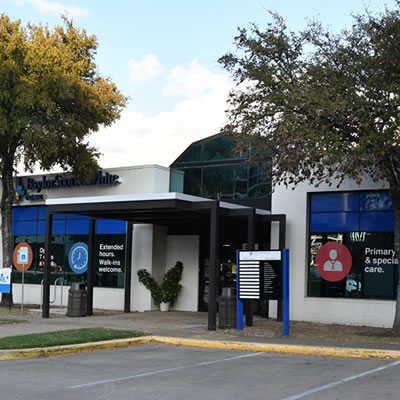
Baylor Scott & White Clinic - Austin North Burnet
2608 Brockton Dr , Austin, TX, 78758- Monday: 8:00 am - 5:00 pm
- Tuesday: 8:00 am - 5:00 pm
- Wednesday: 8:00 am - 5:00 pm
- Thursday: 8:00 am - 5:00 pm
- Friday: 8:00 am - 5:00 pm
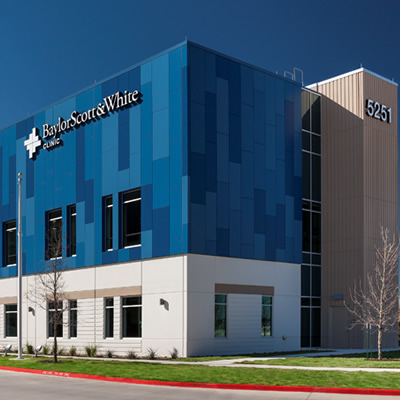
Baylor Scott & White Clinic - Austin Oak Hill
5251 US 290 , Austin, TX, 78735- Monday: 8:00 am - 5:00 pm
- Tuesday: 8:00 am - 5:00 pm
- Wednesday: 8:00 am - 5:00 pm
- Thursday: 8:00 am - 5:00 pm
- Friday: 8:00 am - 5:00 pm

Baylor Scott & White Medical Center - Austin
5245 W US Hwy 290 Service Rd , Austin, TX, 78735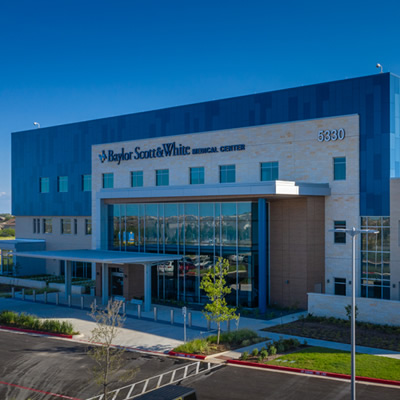
Baylor Scott & White Medical Center - Buda
5330 Overpass Rd , Buda, TX, 78610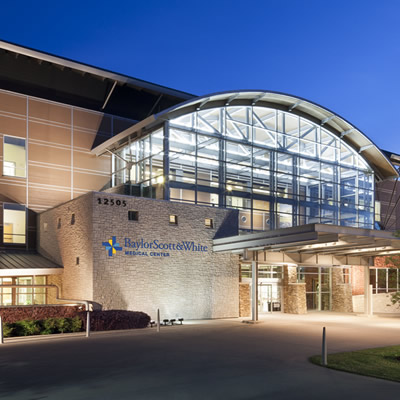
Baylor Scott & White Medical Center - Centennial
12505 Lebanon Rd , Frisco, TX, 75035
Baylor Scott & White Medical Center - Grapevine
1650 W College St , Grapevine, TX, 76051
Baylor Scott & White Medical Center - Lakeway
100 Medical Pkwy , Lakeway, TX, 78738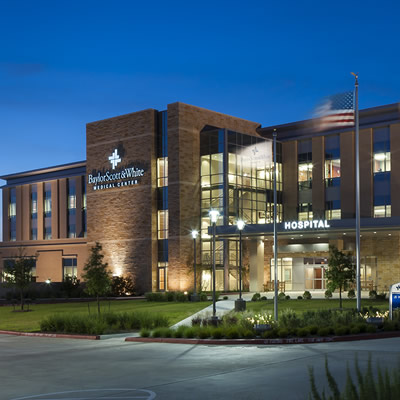
Baylor Scott & White Medical Center - Marble Falls
810 W State Hwy 71 , Marble Falls, TX, 78654
Baylor Scott & White Medical Center - McKinney
5252 W University Dr Highway 380 at Lake Forest Drive, McKinney, TX, 75071
Baylor Scott & White Medical Center - Plano
4700 Alliance Blvd , Plano, TX, 75093
Baylor Scott & White Medical Center - Round Rock
300 University Blvd , Round Rock, TX, 78665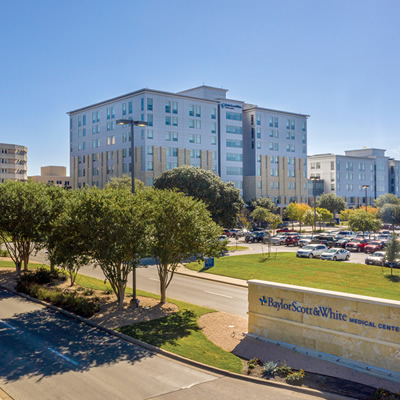
Baylor Scott & White Medical Center - Temple
2401 S 31st St , Temple, TX, 76508
Baylor Scott & White Orthopaedic Trauma Associates - Dallas
3409 Worth St Ste 300, Dallas, TX, 75246- Monday: 8:00 am - 4:30 pm
- Tuesday: 8:00 am - 4:30 pm
- Wednesday: 8:00 am - 4:30 pm
- Thursday: 8:00 am - 4:30 pm
- Friday: 8:00 am - 2:00 pm
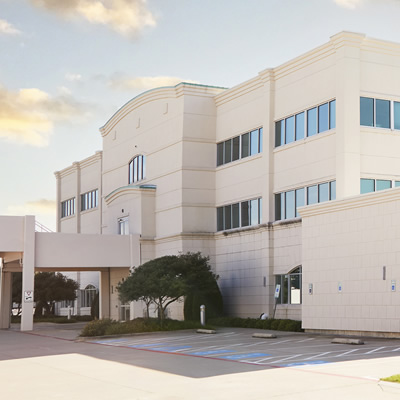
Baylor Scott & White Orthopaedic Trauma Associates - Grapevine
1631 Lancaster Dr Ste 230, Grapevine, TX, 76051- Monday: 8:00 am - 4:30 pm
- Tuesday: 8:00 am - 4:30 pm
- Wednesday: 8:00 am - 4:30 pm
- Thursday: 8:00 am - 4:30 pm
- Friday: 8:00 am - 2:00 pm

Baylor Scott & White Orthopaedic Trauma Associates - McKinney
5220 W University Dr POB II, Ste 220, McKinney, TX, 75071- Monday: 8:00 am - 4:30 pm
- Tuesday: 8:00 am - 4:30 pm
- Wednesday: 8:00 am - 4:30 pm
- Thursday: 8:00 am - 4:30 pm
- Friday: 8:00 am - 2:00 pm

Baylor Scott & White Orthopedic Associates of Dallas
3900 Junius St Ste 500, Dallas, TX, 75246- Monday: 8:00 am - 5:00 pm
- Tuesday: 8:00 am - 5:00 pm
- Wednesday: 8:00 am - 5:00 pm
- Thursday: 8:00 am - 5:00 pm
- Friday: 8:00 am - 5:00 pm
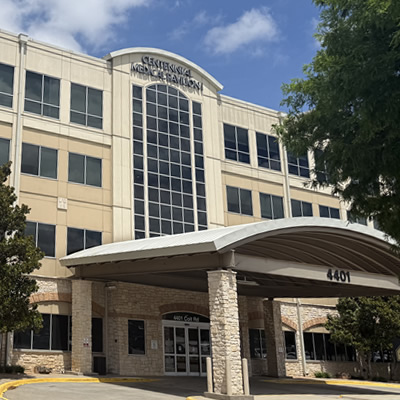
Baylor Scott & White Orthopedic Associates of Dallas - Centennial
4401 Coit Rd Ste 203, Frisco, TX, 75035- Monday: 8:00 am - 5:00 pm
- Tuesday: 8:00 am - 5:00 pm
- Wednesday: 8:00 am - 5:00 pm
- Thursday: 8:00 am - 5:00 pm
- Friday: 8:00 am - 4:00 pm
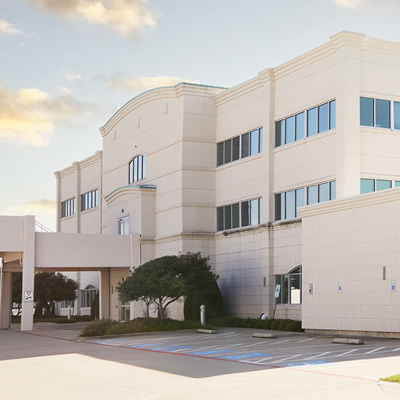
Baylor Scott & White Orthopedic Associates of Dallas - Complex Shoulder Institute
1631 Lancaster Dr Ste 230, Grapevine, TX, 76051- Monday: 8:00 am - 5:00 pm
- Tuesday: 8:00 am - 5:00 pm
- Wednesday: 8:00 am - 5:00 pm
- Thursday: 8:00 am - 5:00 pm
- Friday: 8:00 am - 5:00 pm

Baylor Scott & White Orthopedic Associates of Dallas - Flower Mound
1110 Parker Sq , Flower Mound, TX, 75028- Monday: 8:00 am - 5:00 pm
- Tuesday: 8:00 am - 5:00 pm
- Wednesday: 8:00 am - 5:00 pm
- Thursday: 8:00 am - 5:00 pm
- Friday: 8:00 am - 5:00 pm
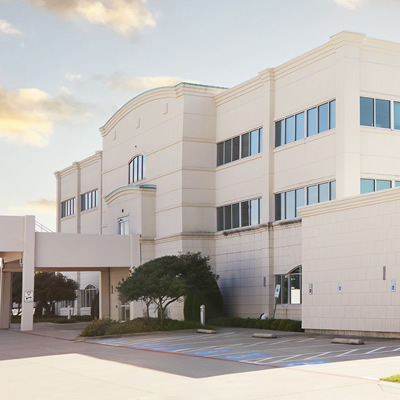
Baylor Scott & White Orthopedic Associates of Dallas - Grapevine
1631 Lancaster Dr Ste 230, Grapevine, TX, 76051- Monday: 8:00 am - 5:00 pm
- Tuesday: 8:00 am - 5:00 pm
- Wednesday: 8:00 am - 5:00 pm
- Thursday: 8:00 am - 5:00 pm
- Friday: 8:00 am - 5:00 pm

Baylor Scott & White Orthopedic Associates of Dallas - McKinney
5220 W University Dr POB II, Ste 300, McKinney, TX, 75071- Monday: 8:00 am - 5:00 pm
- Tuesday: 8:00 am - 5:00 pm
- Wednesday: 8:00 am - 5:00 pm
- Thursday: 8:00 am - 5:00 pm
- Friday: 8:00 am - 5:00 pm
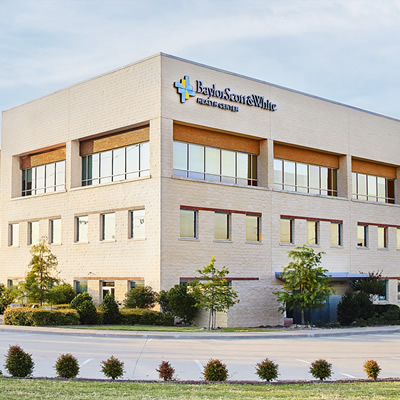
Baylor Scott & White Orthopedic Associates of Dallas - North Garland
7217 Telecom Pkwy Ste 325, Garland, TX, 75044
Baylor Scott & White Orthopedic Associates of Dallas - Park Cities
9101 N Central Expy Ste 370, Park Cities, TX, 75231
Baylor Scott & White Orthopedic Associates of Dallas - Plano
4716 Alliance Blvd Pavilion II, Ste 600, Plano, TX, 75093
Baylor Scott & White Orthopedic Associates of Dallas - Sunnyvale
341 Wheatfield Dr Ste 290, Sunnyvale, TX, 75182
Baylor Scott & White Orthopedic Associates of Dallas at The Star
3800 Gaylord Pkwy Ste 810, Frisco, TX, 75034- Monday: 8:00 am - 5:00 pm
- Tuesday: 8:00 am - 5:00 pm
- Wednesday: 8:00 am - 5:00 pm
- Thursday: 8:00 am - 5:00 pm
- Friday: 8:00 am - 5:00 pm
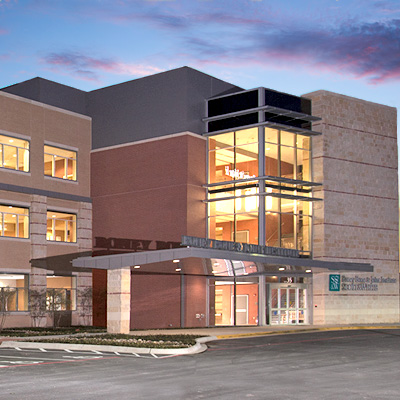
Baylor Scott & White Roney Bone and Joint Institute - Temple
2401 S 31st St , Temple, TX, 76508- Monday: 8:00 am - 5:00 pm
- Tuesday: 8:00 am - 5:00 pm
- Wednesday: 8:00 am - 5:00 pm
- Thursday: 8:00 am - 5:00 pm
- Friday: 8:00 am - 5:00 pm
- Saturday: 7:00 am - 5:00 pm
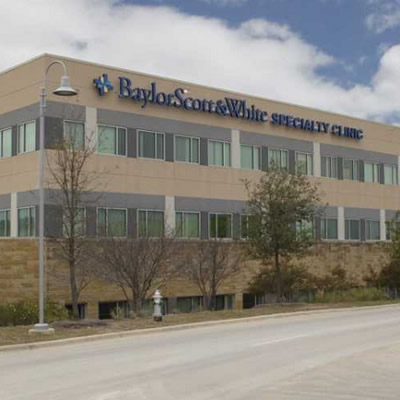
Baylor Scott & White Specialty Clinic - Lakeway
200 Medical Pkwy , Lakeway, TX, 78738- Monday: 8:00 am - 5:00 pm
- Tuesday: 8:00 am - 5:00 pm
- Wednesday: 8:00 am - 5:00 pm
- Thursday: 8:00 am - 5:00 pm
- Friday: 8:00 am - 5:00 pm

Baylor Scott & White Sports Surgery Center at The Star
3800 Gaylord Pkwy Ste 410, Frisco, TX, 75034- Monday: 6:00 am - 5:00 pm
- Tuesday: 6:00 am - 5:00 pm
- Wednesday: 6:00 am - 5:00 pm
- Thursday: 6:00 am - 5:00 pm
- Friday: 6:00 am - 5:00 pm
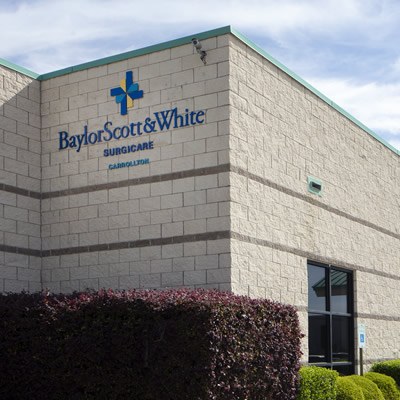
Baylor Scott & White Surgicare - Carrollton
4780 N Josey Ln , Carrollton, TX, 75010- Monday: 6:00 am - 5:00 pm
- Tuesday: 6:00 am - 5:00 pm
- Wednesday: 6:00 am - 5:00 pm
- Thursday: 6:00 am - 5:00 pm
- Friday: 6:00 am - 5:00 pm

Baylor Scott & White The Shoulder Center at Baylor University Medical Center at Dallas
3900 Junius St Ste 740, Dallas, TX, 75246- Monday: 8:30 am - 4:30 pm
- Tuesday: 8:30 am - 4:30 pm
- Wednesday: 8:30 am - 4:30 pm
- Thursday: 8:30 am - 4:30 pm
- Friday: 8:30 am - 12:30 pm
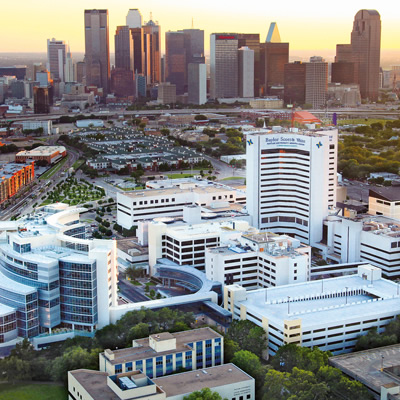
Baylor University Medical Center, part of Baylor Scott & White Health
3500 Gaston Ave , Dallas, TX, 75246Hours of Operation
Hours of Operation
Office Hours
Frequently asked questions
-
Can a rotator cuff tear heal on its own?
A rotator cuff tear usually won't heal on its own. Treatment options like rest, physical therapy or surgery may be needed, depending on how severe the tear is. It's important to see a medical provider to get the right treatment and avoid further damage.
-
Is surgery needed for a rotator cuff tear?
Surgery isn’t always necessary for a rotator cuff tear. Many tears improve with rest, ice, physical therapy and pain relief. Surgery may be recommended if the tear is large, caused by an injury, or if other treatments don’t work, especially if you need to use your arm for activities.
-
Do rotator cuff tears hurt all the time?
A rotator cuff tear doesn't always cause pain. You may feel pain when lifting your arm, reaching behind your back, or at night, especially when sleeping on the injured side. Some people don’t experience pain at all, especially if the tear is small or other muscles help compensate.
-
How painful is a rotator cuff tear?
A rotator cuff tear can cause pain ranging from a dull ache to sharp, intense discomfort. If the tear happens suddenly, like from an injury, the pain can be immediate and severe. Gradual tears often cause pain that worsens with activity or at night, especially when moving or sleeping on the shoulder.
-
Where does a rotator cuff tear hurt?
A rotator cuff tear usually causes pain in the front of the shoulder, which can spread down the arm. The pain may feel dull or sharp, especially when moving your arm, and can make it hard to sleep. You might also feel weakness, limited movement or hear popping sounds.
-
How long does a rotator cuff tear take to heal
A rotator cuff tear can take anywhere from a few weeks to a year to heal, depending on how severe the tear is. Smaller tears may heal with rest and physical therapy, while larger ones might need surgery and take several months to fully recover. Physical therapy helps speed up healing.
-
Can a rotator cuff tear cause neck pain?
Yes, a rotator cuff tear can cause neck pain. The pain might travel from your shoulder up to your neck, especially in the upper back area. Trying to avoid pain in your shoulder can also put extra strain on your neck muscles, leading to discomfort.